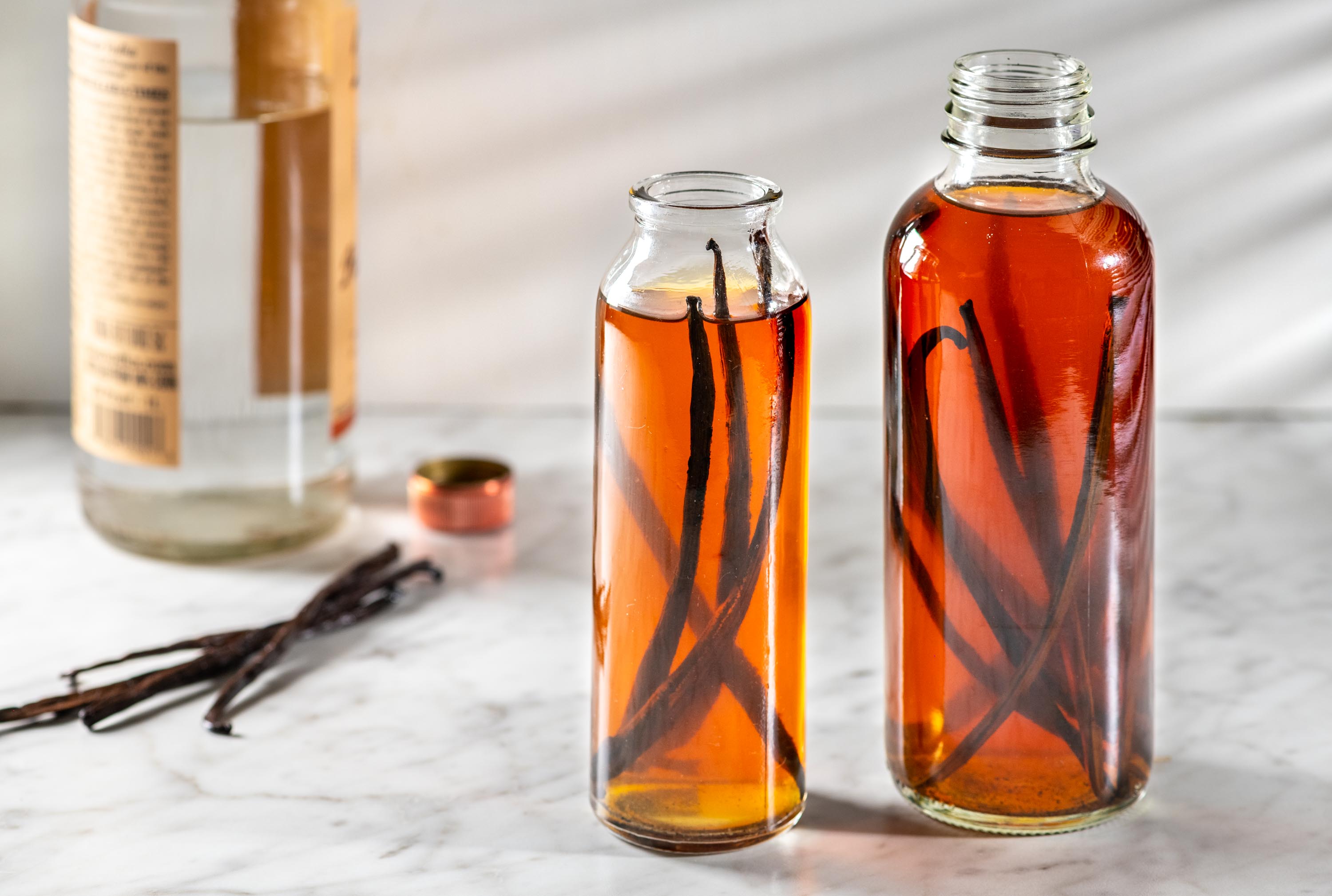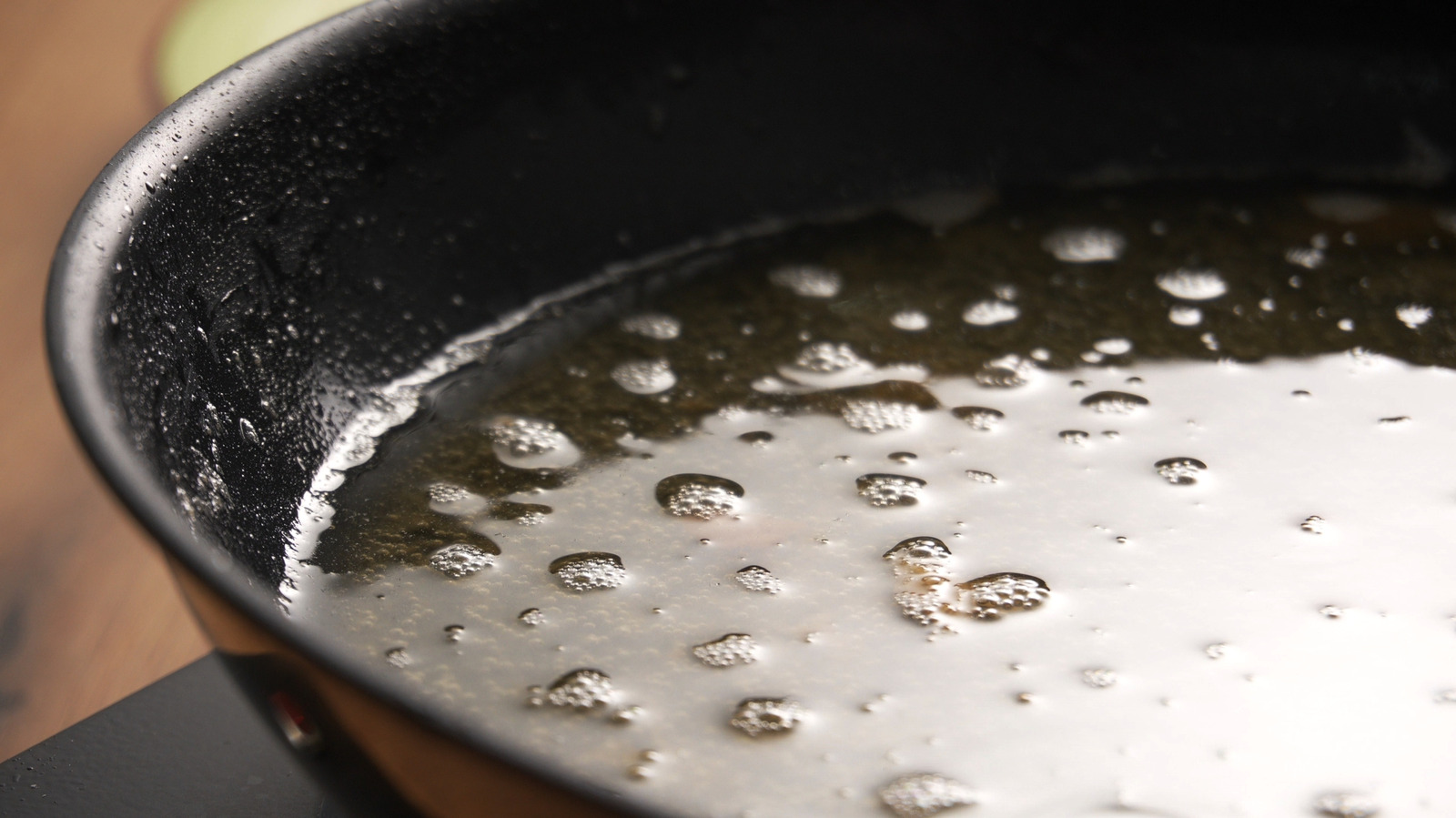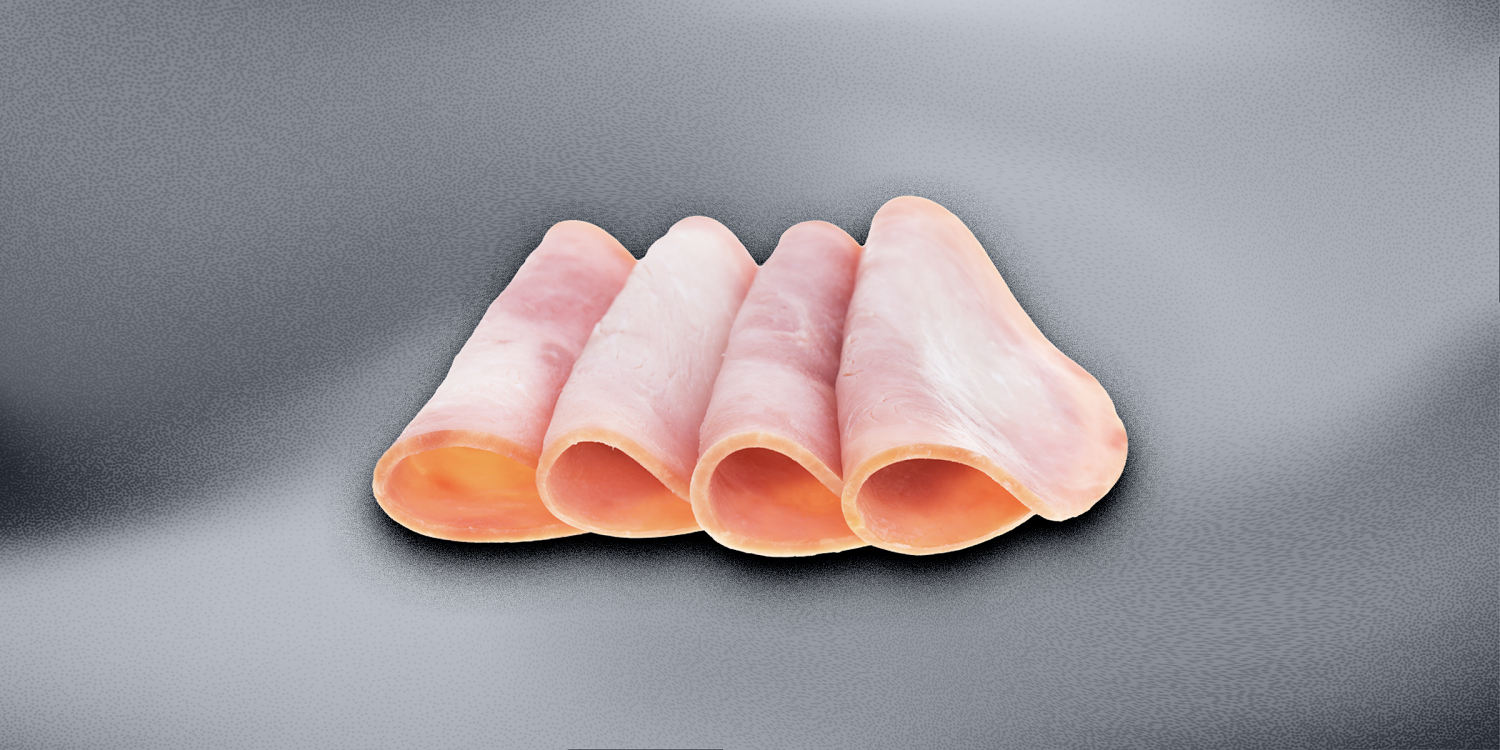An array of vanilla options, including beans, pure vanilla extract (store-bought and homemade) and imitation vanilla. Scott Suchman/photo; Lisa Cherkasky/food styling, for The Washington Post Tucked near the top of President Donald Trump’s list of countries set to face “reciprocal” tariffs on exports to the United States was one that alarmed more than a few avid bakers: Madagascar. The island nation off the southeast coast of Africa is the source of an estimated 80 percent of the world’s natural vanilla.
While Trump last week announced a 90-day pause on those “reciprocal” tariffs, when the pause expires, exports from Madagascar are slated to be taxed at a rate of 47 percent. In this unsettled interim, exporters say they have seen a surge in rushed orders from American buyers. Pure vanilla extract is likely already the most expensive ingredient in the average baker’s pantry.

And home cooks who are still smarting over the eye-popping price of eggs now have another cause for frustration. While the debate over whether to splurge on pure vanilla is not a new one (and one that won’t go away regardless of where the chips fall on tariffs), the possibility of a higher strain on our wallets might be enough to make committed bakers wonder: Is the real stuff actually worth it? Even asking the question can feel like a betrayal to someone like me who is more than willing to invest in ingredients when they matter most. But the truth is, imitation vanilla has long been a staple in pantries — and store-bought items.
“About 90 percent of the vanilla flavoring consumed in the United States is artificial,” according to Harold McGee in “On Food and Cooking.” So maybe it’s time to stop treating imitation vanilla like a dirty little secret. Chef and cookbook author Christina Tosi, founder of the Milk Bar bakery empire, certainly thinks so.
“The word ‘imitation’ has a negative connotation,” says Tosi, who has not been shy about professing her affection for the alternative stuff. In many families, such as Tosi’s, imitation vanilla was the only vanilla they bought for years. Grocery stores have not always stocked pure vanilla, and not everyone could afford it anyway, meaning plenty of people were first accustomed to imitation.
“That’s what we think of as nostalgia,” Tosi says. When it comes to flavor preference, “I can guarantee you, 10 out of 10, that people are going to say, ‘I want this stuff.’ ” “Imitation vanilla sometimes tastes better than real vanilla” is one of the “truth bombs” pastry chef Paola Velez shares in her debut cookbook, “Bodega Bakes.
” “Don’t @ me, just try it,” she writes. “If you still have a problem with this statement, then your complaint is with God. It’s above me.
” The production of pure vanilla extract is a time-consuming and laborious process, starting with harvesting, curing and drying the pods of the vanilla orchid, McGee says. To make the extract itself, a combination of water and alcohol is passed over chopped vanilla beans for several days before the liquid is aged for further flavor development. Imitation vanilla is produced rather differently, through “a chemical process that starts with a substance called guaiacol,” Hannah Crowley writes at America’s Test Kitchen.
“Guaiacol can be manufactured from components of clove oil, wood pulp, or other sources, but most of the world’s supply is derived from petroleum.” (These sources are one of the main sticking points for imitation vanilla skeptics.) The end result is synthetic vanillin, which is chemically identical to the predominant flavor component that you find in natural vanilla.
To round out the flavor, imitation vanilla may contain other natural and artificial ingredients, including caramel color, sugar, and cocoa and tea “extractives,” along with the water and alcohol you see in pure vanilla extract. As I found with the bottles I bought, the blend can vary among brands, so read the labels. Tosi recommends picking a brand where alcohol is listed toward the beginning of the ingredients (ingredients are listed in descending order of amount), as the aroma- and flavor-producing compounds are more effectively carried in alcohol than water.
If caramel color and sugar are the first ingredients listed, you may want to look elsewhere. Imitation vanilla owes its flavor primarily to synthetic vanillin, while vanilla beans boast more than 200 other volatile compounds, leading to a “full, complex, subtle flavor,” McGee writes. But when it comes to most home bakers — and home-baked goods — does that really matter? I decided to put it to the test and see whether Tosi’s assertion about imitation vanilla held true.
I gathered three vanilla contenders: Costco’s Kirkland Pure Vanilla Extract ($0.88 per ounce), my longtime standby when I haven’t been flush enough to splurge on a very high-end brand, such as Heilala; McCormick Premium Vanilla Flavor ($0.73 per ounce), a popular imitation vanilla; and, based on Velez’s advice in her book, a Mexican brand, in this case Molina ($0.
20 per ounce; a blend of natural and imitation vanilla). As a wild card, I threw almond extract into the mix. To replicate one of the most typical scenarios in which a home baker might reach for vanilla, I made one batch of dough of the classic Nestle Toll House chocolate chip cookies and divided it four ways, flavoring each with one of the contenders.
My only departure was to slightly increase the amount of extract/flavoring per batch. The math on the original recipe would have meant using 1/2 teaspoon of each, but I bumped it up a bit to 3/4 teaspoon. (After all, who hasn’t splashed in a little extra vanilla?) The results of the blind taste test: Five tasters picked the cookies with McCormick’s imitation vanilla as their favorite, two the Kirkland pure vanilla.
Alas, the almond extract and Molina received no votes. “Balanced flavor with vanilla flavor that comes through but doesn’t overpower,” said one taster of the McCormick cookies. “Reminds me of the non-fancy chocolate chip cookies I made as a kid (before all the recipes got so complicated),” said another.
Of the Kirkland vanilla cookies, tasters generally found less to comment on. “Not a particularly noticeable vanilla taste,” wrote one. “Butter and sugar predominant.
No other prominent tastes for me,” commented a different taster. Just because I like to be thorough, I decided to conduct one more test with a wider audience, pitting the McCormick imitation vanilla against the Simply Organic pure Madagascar vanilla extract ($4.12 per ounce), the only natural option at our nearby market and, coincidentally, America’s Test Kitchen’s favorite pure vanilla.
Again, our tasters preferred the imitation vanilla to the real stuff, though by a slightly narrower margin, 16 to 12. Comments on the imitation vanilla: “deeper/richer flavor,” “more complex flavor overall, and smells better” and “a hint more of salt or vanilla.” On the pure vanilla: “very buttery, not much vanilla flavor [if at all],” “pretty much perfect” and “maybe a little saltier,” with another taster also commenting on the predominance of the butter.
For their part, in an across-the-board test, the tasters at America’s Test Kitchen favored imitation vanilla over pure extract, both uncooked, in samples of frosting and pudding, as well as in a head-to-head tasting that pitted their top imitation vanilla against their top pure vanilla. “For the most part, our tasters could not tell the difference between real and fake vanilla flavor,” Crowley adds. Not convinced? That’s OK.
What you spend your money on is between you and your wallet. Whether you’re looking to limit your use of pure vanilla to save money or find other (non-imitation) alternatives, here are a few more tips. Buy in bulk Whether purchasing a larger bottle through a wholesale club such as Costco or BJ’s, a restaurant supply store or website, or other mainstream or specialty retailers, going the bulk route can save you money.
For example: Compare the Kirkland pure vanilla, priced at $13.99 for 16 ounces (the aforementioned $0.88 per ounce), with what a bottle of McCormick’s pure vanilla would be at my local grocery store, $7.
49 for 2 ounces ($3.75 per ounce, at the current sale price). Reduce the cost even more by splitting it with a few other people.
Save pricey pure vanilla ice cream for where it really shines, say, homemade vanilla ice cream. Scott Suchman/photo; Lisa Cherkasky/food styling, for The Washington Post Save pure vanilla for when it matters most Vanilla goes into a lot of baked goods and desserts, but it’s often not the sole, or even primary, flavor. If you want to ration your stash of vanilla, prioritize it in such recipes as Vanilla Ice Cream, pudding, pastry cream, crème brûlée or a simple sugar cookie.
(Vanilla beans or vanilla bean paste would shine in these situations as well.) When there are plenty of other strong supporting players, such as chocolate and spices, imitation vanilla, or one of the alternatives below, may work just as well. If you have splurged on beans for a vanilla-forward treat, stretch them even further, Tosi says.
Save the spent pods and bury them in granulated sugar. The infused sugar is another opportunity to bring the sweet, delicate flavors of vanilla to whatever you’re making. Homemade vanilla extract.
Laura Chase de Formigny/photo; Diana Jeffra/food styling, for The Washington Post Make your own vanilla extract Homemade Vanilla Extract is fairly simple to assemble. You’ll need to invest in plump vanilla beans and a decent-quality spirit, such as vodka. Still, given the volume of what you end up with (about 3 cups of extract) compared to the price per ounce of store-bought, especially those labeled pure Madagascar, the math can work in your favor.
Again, consider sharing the cost with friends, even if one person is in charge of procuring and babysitting the extract as it infuses. If you end up with more spent beans along the way, simply add them to the bottle. Try another extract, essence or alcohol In some situations, you can replace the vanilla entirely or supplement imitation with more ingredients to replicate its depth of flavor.
While perhaps not the best fit in a chocolate chip cookie, as we learned, consider almond extract as a swap in other desserts (being mindful of nut allergies, of course). It tends to come across stronger, so use less than the amount of vanilla called for; ditto other floral options such as orange blossom water and rose water. Another possibility: bourbon or whiskey, especially since vanillin is formed during the manufacturing of the wood barrels used to age the liquor.
Experiment with other flavorful ingredients Limitation can breed creativity, Tosi says, so she encourages home bakers to find other ways to capture (or replace) the warm, rich and caramel undertones of pure vanilla if it’s no longer in your budget. Nutty brown butter is a great start. Milk powder is another go-to ingredient for Tosi, and you can coax even more depth out of it by toasting it very briefly in a dry skillet or the oven until it’s light golden brown.
Malted milk powder — that milkshake staple — is another way to go. Such natural sweeteners as dates, figs and maple syrup can also bring hints of vanilla, Tosi says. And even if you’re not interested in almond extract, toasted almonds, especially folded into a cookie or sprinkled on a cake, are packed with flavor.
We believe it’s important to offer commenting on certain stories as a benefit to our readers. At its best, our comments sections can be a productive platform for readers to engage with our journalism, offer thoughts on coverage and issues, and drive conversation in a respectful, solutions-based way. It’s a form of open discourse that can be useful to our community, public officials, journalists and others.
Read more...
We do not enable comments on everything — exceptions include most crime stories, and coverage involving personal tragedy or sensitive issues that invite personal attacks instead of thoughtful discussion. For those stories that we do enable discussion, our system may hold up comments pending the approval of a moderator for several reasons, including possible violation of our guidelines. As the Maine Trust’s digital team reviews these comments, we ask for patience.
Comments are managed by our staff during regular business hours Monday through Friday and limited hours on Saturday and Sunday. Comments held for moderation outside of those hours may take longer to approve. By joining the conversation, you are agreeing to our commenting policy and terms of use .
More information is found on our FAQs . You can modify your screen name here . Show less Please sign into your Press Herald account to participate in conversations below.
If you do not have an account, you can register or subscribe . Questions? Please see our FAQs . Your commenting screen name has been updated.
Send questions/comments to the editors..
Food

Tariffs could make pure vanilla even more pricey. Is it worth it?

Madagascar’s pure vanilla might get even more expensive. Here’s what you can use instead.















